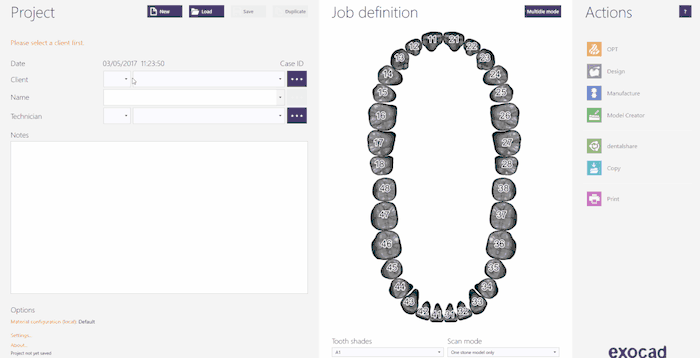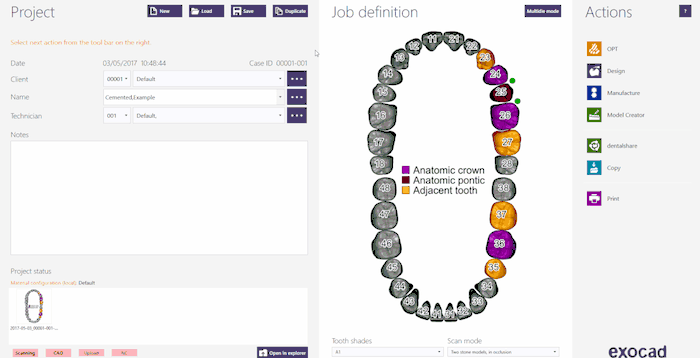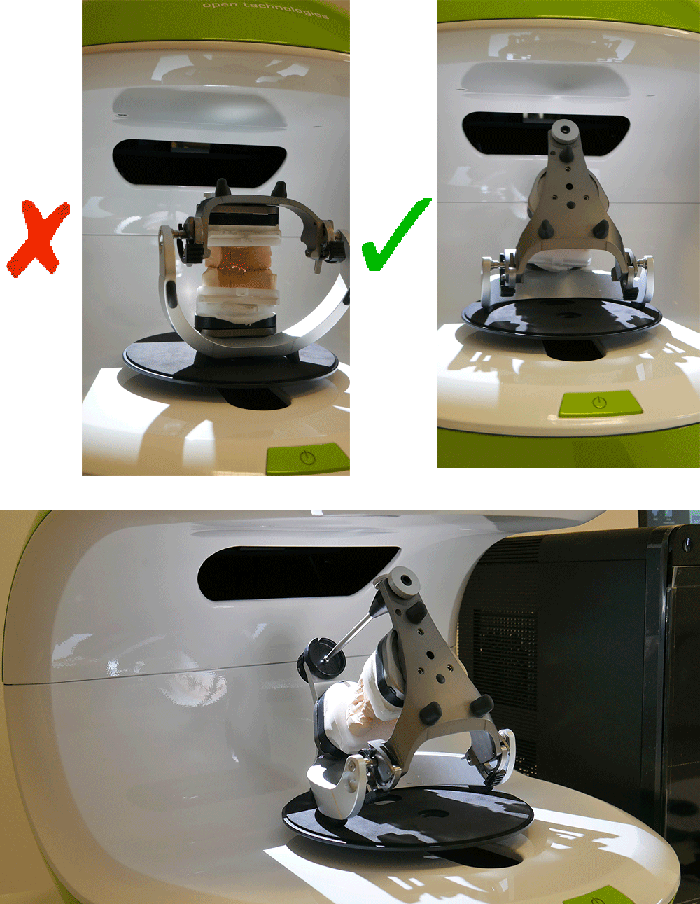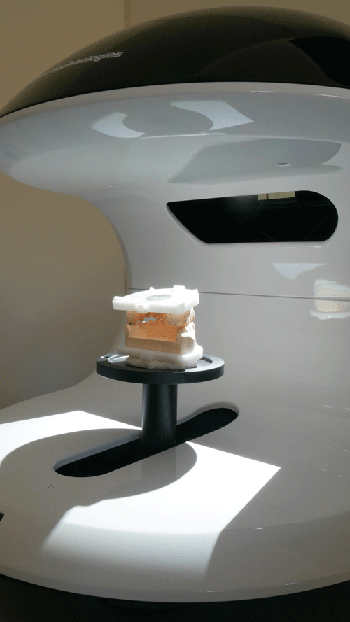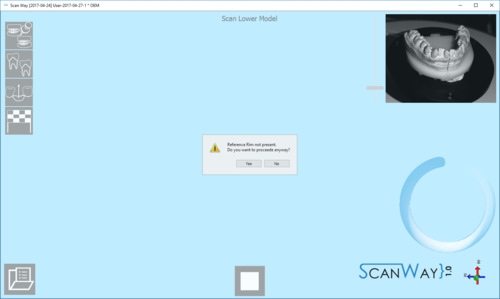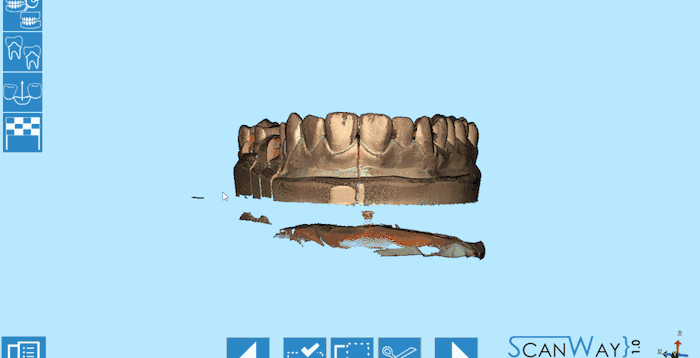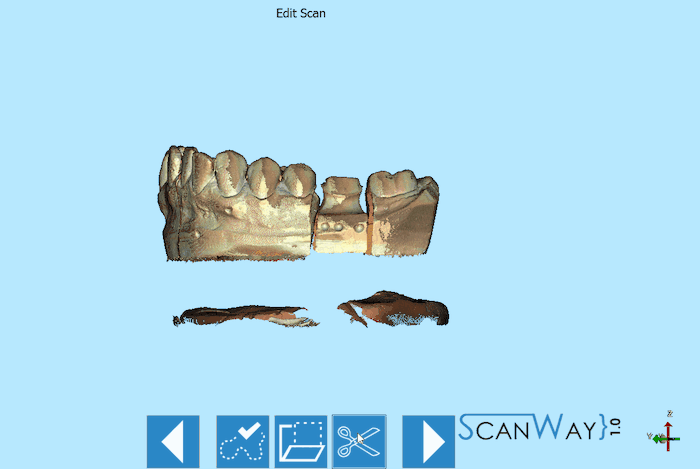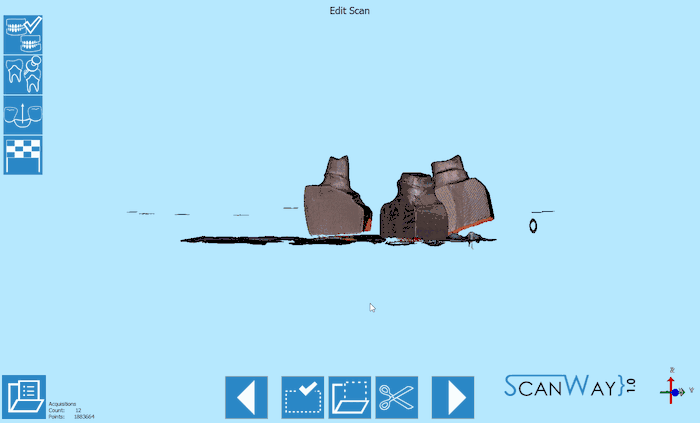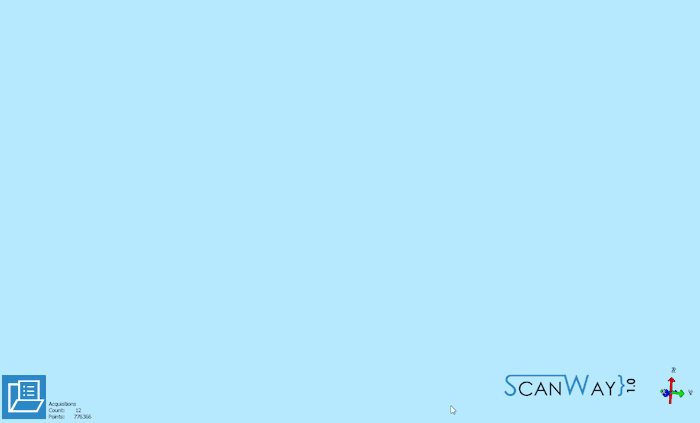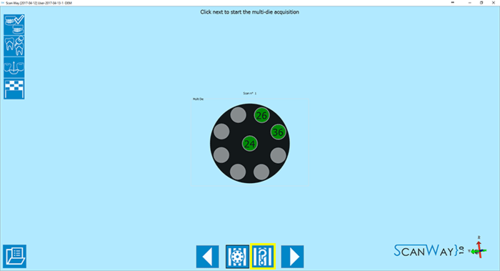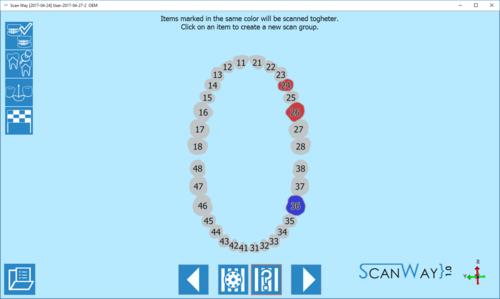Difference between revisions of "ExamplesCemented/pt-br"
(Created page with "A imagem nesta etapa pode ser editada ou aparada. Nesta fase, na verdade, é importante não editar muito a imagem ou cortar grandes partes de informações, pois tornaria mai...") |
(Created page with "A edição da imagem pode ser realizada usando as ferramentas de seleção.") |
||
| Line 89: | Line 89: | ||
A imagem nesta etapa pode ser editada ou aparada. Nesta fase, na verdade, é importante não editar muito a imagem ou cortar grandes partes de informações, pois tornaria mais difícil para o software calcular o alinhamento automático do objeto à sua referência. | A imagem nesta etapa pode ser editada ou aparada. Nesta fase, na verdade, é importante não editar muito a imagem ou cortar grandes partes de informações, pois tornaria mais difícil para o software calcular o alinhamento automático do objeto à sua referência. | ||
| − | + | A edição da imagem pode ser realizada usando as ferramentas de seleção. | |
[[File:edit_seltools.gif]] | [[File:edit_seltools.gif]] | ||
Revision as of 09:01, 3 July 2017
Nesta página será seguido e explicado o Assistente para escanear 2 modelos em oclusão com 3 munhões (2 superiores e 1 inferior).
Contents
Definição do projeto a partir de Exocad
Para criar este projeto no Exocad, clique no ícone DentalDB na sua área de trabalho. O gerente do projeto será aberto.
Preencha as informações do projeto, o tipo de restauração que precisa ser projetada e os parâmetros extras. Para este tipo de projeto, certifique-se de que o 'Modo Scan esteja definido em 'Dois modelos de gesso em oclusão' .
Para obter mais informações sobre como criar projetos no Exocad, visite a página específica no Exocad Wiki!
Aqui está a definição do projeto para o nosso projeto de demonstração:
Uma vez definido o projeto, clique em 'OPT' na seção Ações para iniciar o software de escaneamento.
A primeira coisa que o software de escaneamento mostra é o projeto criado no Exocad, se o projeto estiver corretamente definido, clique no botão Aceitar ![]() .
.
Definição do projeto a partir do ScanWay
Todos os projetos também podem ser definidos no software de escaneamento, independentemente do CAD que mais tarde será usado para projetar.
Inicie o software de digitalização clicando duas vezes no ícone do ScanWay na sua área de trabalho. A Página de boas-vindas será aberta; Para criar o projeto, clique no primeiro ícone.
Para obter informações detalhadas sobre como definir um projeto, visite a página específica: Crie um Novo Projeto.
Aqui está a definição do nosso projeto de demonstração:
Ambas as definições do projeto descritas levam para o mesmo assistente, que agora será seguido passo a passo.
Etapa 1: Escaneamento Articulador
O primeiro passo de qualquer projeto que tenha sido configurado para ter ambas arcadas, é o Articulador Scan.
'Para a análise do Articulador, não significa necessariamente que um Articulador precise ser escaneado; O escaneamento necessário é o escaneamento da oclusão usando o articulador em seu suporte específico ou colocando os dois modelos em oclusão no suporte do modelo. '
Se o usuário precisar escanear um articulador, sugerimos inclina-lo para trás, para poder obter o máximo de informações possível. Esta é apenas uma sugestão, pois nem todos os articuladores podem ser inclinados.
Na visão ao vivo da interface de escaneamento, você pode realmente ver que, se o articulador estiver direito, será difícil adquirir a oclusão corretamente.
Por outro lado, como mencionado anteriormente, também é possível escanear os dois modelos em oclusão no normal suporte do modelo mantido junto com bandas de borracha ou cera, se necessário.
Uma vez que os objetos foram colocados no escaner (o articulador ou os modelos um em cima do outro), o escaneamento pode ser iniciado com o 'Botão de escaneamento' x25px. Uma vez concluída a digitalização, o resultado será mostrado.
Para obter mais informações sobre as outras funções disponíveis, verifique a página Escan Interface.
Clique em x25px para acessar a segunda etapa do assistente.
Etapa 2: modelo inferior
O segundo passo de qualquer projeto que tenha sido configurado para ter ambas arcadas, é o Escaneamento Modelo Inferior. Todas as etapas, exceto para o articulador, incluem duas sub-etapas: o escaneamento real e a edição da imagem escaneada.
Etapa de Escaneamento
Coloque o modelo inferior no suporte do modelo e clique no botão 'Scan' x25px. Uma vez concluído o escaneamento, o resultado será mostrado.
Este escaneamento foi realizado com a Margem de Referência. Toda vez que o usuário lança um escaneamento para modelos, munhões ou scanbodies, se o software reconhecer que a margem de referência não foi usada, a seguinte mensagem é mostrada.
O usuário pode, portanto, decidir se deseja cancelar o escaneamento, colocar a margem de referência no suporte do modelo e iniciar um novo escaneamento, ou escanear sem usar a margem de referência. Para informações sobre a margem de referência visite a página Acessórios.
Clique em x25px para acessar a segunda parte da etapa Modelo Inferior.
Editar etapa
Esta etapa permite editar a imagem adquirida; Para obter informações detalhadas sobre todas as opções disponíveis nesta etapa, visite a página Editar Ferramentas
A imagem nesta etapa pode ser editada ou aparada. Nesta fase, na verdade, é importante não editar muito a imagem ou cortar grandes partes de informações, pois tornaria mais difícil para o software calcular o alinhamento automático do objeto à sua referência.
A edição da imagem pode ser realizada usando as ferramentas de seleção.
On the other hand, trimming gets very easy when the cut base tool is used.
When you are satisfied with the result click ![]() to access the next wizard step.
to access the next wizard step.
Step 3: Upper Model
The upper model Scan, like the lower model, requires the user to undergo two steps.
Scan Step
Place the upper model on the model holder and click the Scan Button![]() . Once the scan is finished the result will be shown.
. Once the scan is finished the result will be shown.
As before, if the reference rim is not placed on the model holder, the software will show the relevant message.
Click ![]() to access the edit step for the Upper model.
to access the edit step for the Upper model.
Edit Step
The upper model can still be edited as shown for the lower model. This time, we will edit the image using a different selection tool.
When you are satisfied with the result click ![]() to access the next wizard step.
to access the next wizard step.
Save and Align
Immediately after having pushed the ![]() button, the software saves and tries to align automatically the scanned items to their reference.
button, the software saves and tries to align automatically the scanned items to their reference.
To learn more on the automatic alignment and the manual procedure visit our Alignment Interface page.
Step 4: Dies Scan
The steps necessary to successfully scan the dies vary depending on the scanning method that the user chooses to apply: the use of the multidie plate or the custom set-up.
With Multidie
This method is applied by default by the software. It implies that the user will put the dies on the multidie plate in the position shown by the software, which will make each die immediately recognisable and cut the steps of the wizard.
- Definition
- As mentioned, the position of the dies in the multidie plate is pre-established by the software.
The multidie order is based on the Universal tooth numbering, starting from the last element of the first quadrant and following in a clock-wise order. Therefore the die that needs to be placed in the central element will always be the one closest to the last element of the first quadrant.
If there are more than 9 dies, a second definition step will be shown.
Click ![]() to access the multidie scan step.
to access the multidie scan step.
- Scan
- The multidie scan interface is similar to the other steps we just explained, except for the multidie reference that is kept as a reminder on the right side of the window, under the live view.
To proceed click the Scan Button . Once the scan is finished the result will be shown.
. Once the scan is finished the result will be shown.
Click ![]() to access the edit step for the multidie scan.
to access the edit step for the multidie scan.
- Edit
- The edit step offers the same tools we saw in previous steps. In this case, more than one tool may need to be applied.
When you are satisfied with the result click ![]() to access the next wizard step.
to access the next wizard step.
- Alignment
- After being edited the dies get aligned to their references. The result is then showed on the monitor. To learn how to change, fix or redo the alignment check the Alignment Interface page.
Custom Set-Up (Without Multidie)
The user can also decide to scan the dies in a custom order, for instance if he needs to scan the dies on the model base. To access the custom set- up definition, click on the ![]() icon when the software presents the multidie definition.
icon when the software presents the multidie definition.
- Definition
- The software proposes by default a unique scan group which means that, if not defined otherwise, the software will ask the user to scan all the stumps together. In this case I have created a second scan group, to divide the scan of the upper dies from the scan of the lower dies. Click
 to access the scan steps.
to access the scan steps.
- Scan
- Depending on the number of scan groups created, the software will propose one or more scanning steps.
First, the software requires the user to insert the dies in the scanner and acquire the items of the first group.
As a reminder, it marks the items to be scanned together on the right of the window, under the live view.
Then it will ask the user to insert the item selected for the second group. Since the second scan is an individual die, there will be no reminder on the right. Click ![]() to continue.
to continue.
- Dies Identification
- When a scan group has more than one item, the user will be asked to separate each die from the others to correctly identify it.
This step occurs in between the scanning steps. To learn more on the identification of the dies visit the Scan Interface page. Click to continue.
to continue.
- Edit
- If the scan group is formed by one individual die, there will be no identification step. Instead, the edit step will be presented. Click
 to continue.
to continue.
- Alignment
- After being edited or identified the dies get aligned to their references. The result is then showed on the monitor. To learn how to change, fix or redo the alignment check the Alignment Interface page.
Step 5: Healthy and Pontics
At this stage the project has been scanned, unless the user wants to rescan the healthy and pontics. This step is infact a result of the scan of the scanned reference model, trimmed to exclude the parts that have been scanned individually (in this case, the dies). It sometimes happens that in the first model scan, the contact points on the healthy are not correctly recognised, which would require the user to rescan the model. Otherwise, just click ![]() to continue.
to continue.
The software will then propose a further edit step to allow the user to modify the healthy image. Proceed in the edit step as previously explained.
Step 6: Mesh Generation and Export
At this point the software immediately starts mesh generation. The meshes can be edited and exported individually or as a unique image. To learn more about mesh editing visit our Mesh Tools page.
Click on the Export Button ![]() to export to CAD.
to export to CAD.
If the project has been started from Exocad, the CAD will automatically open and the design can be started immediately. Otherwise the software will ask the user how to export the file.
